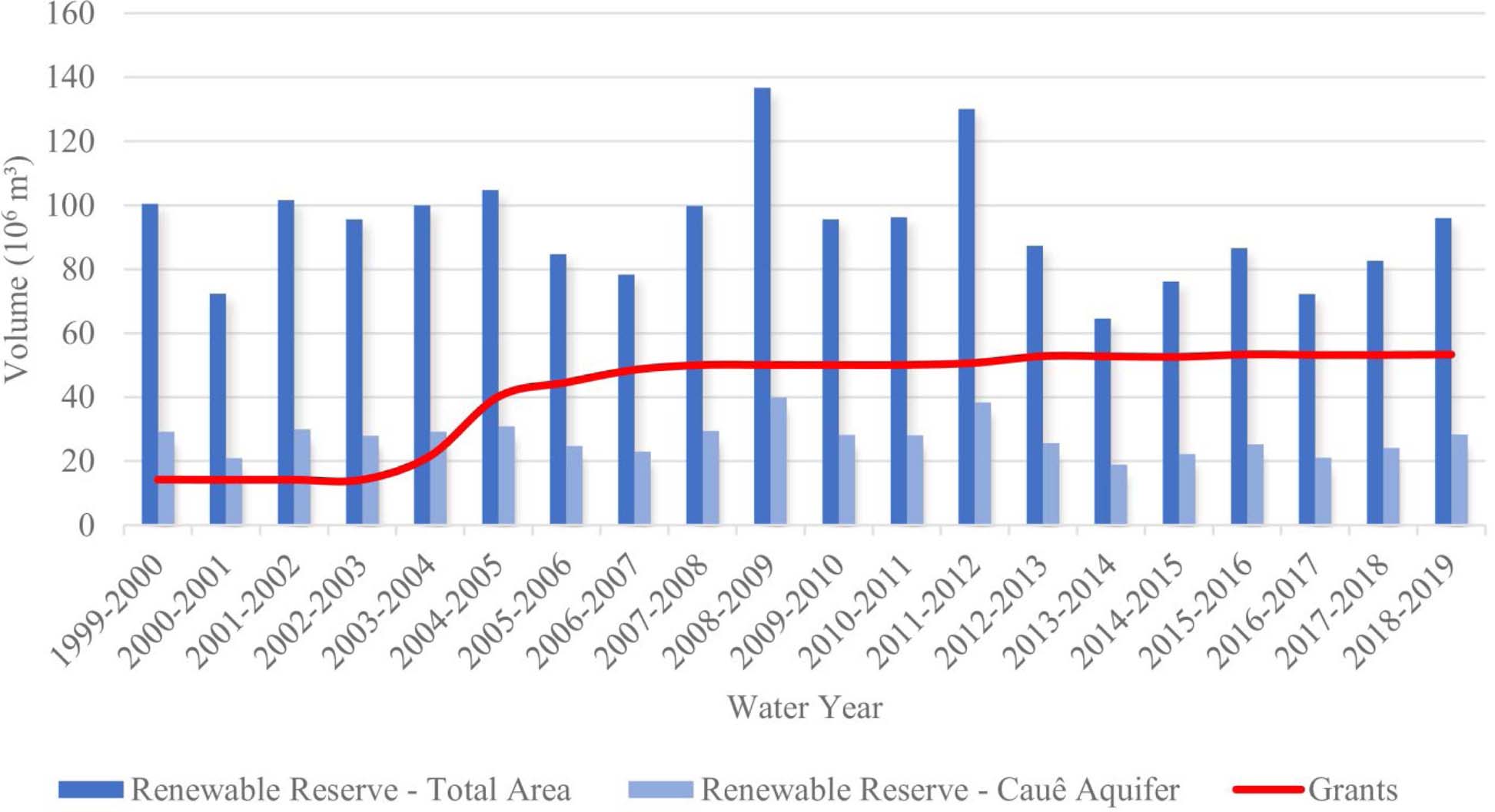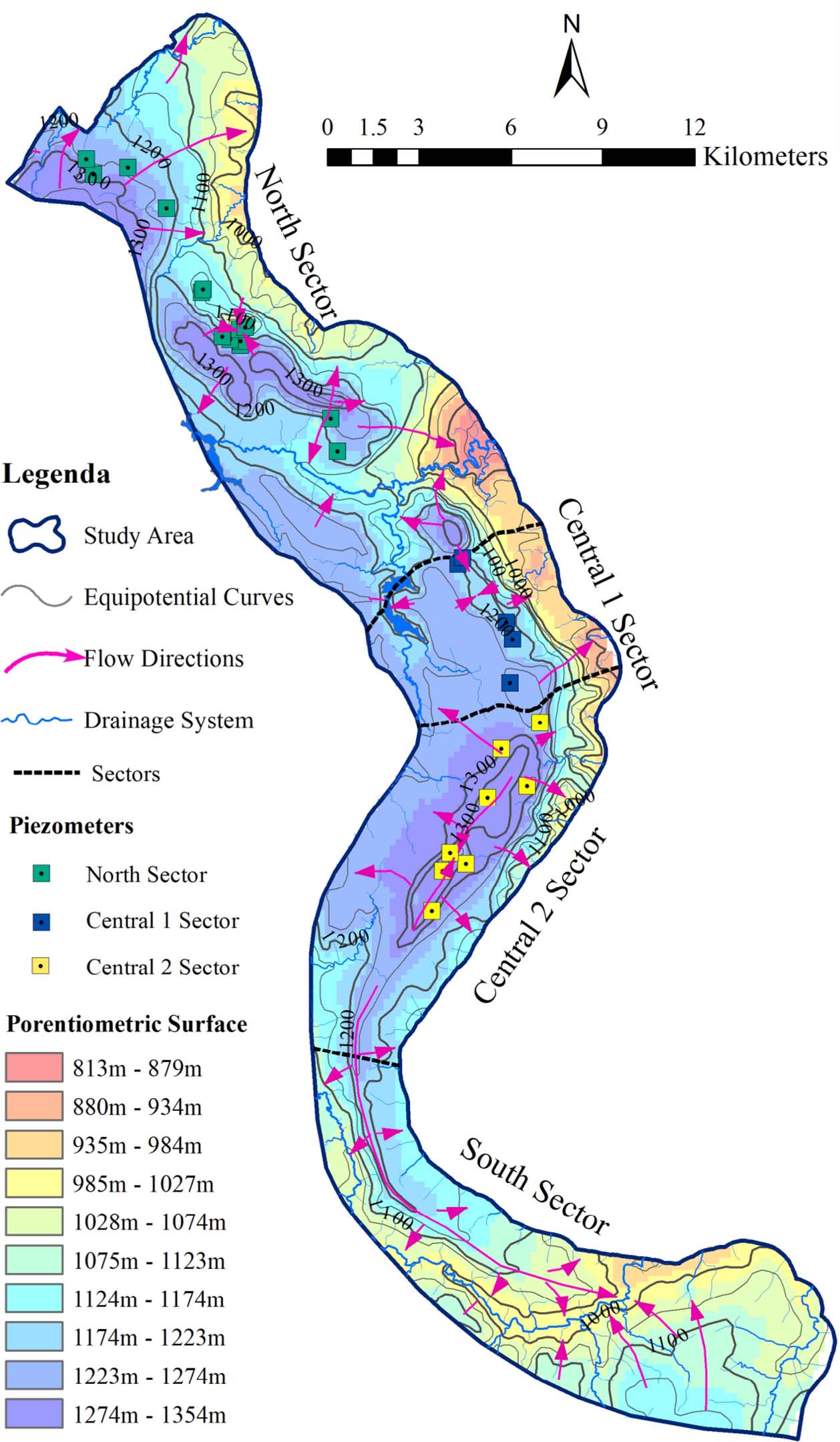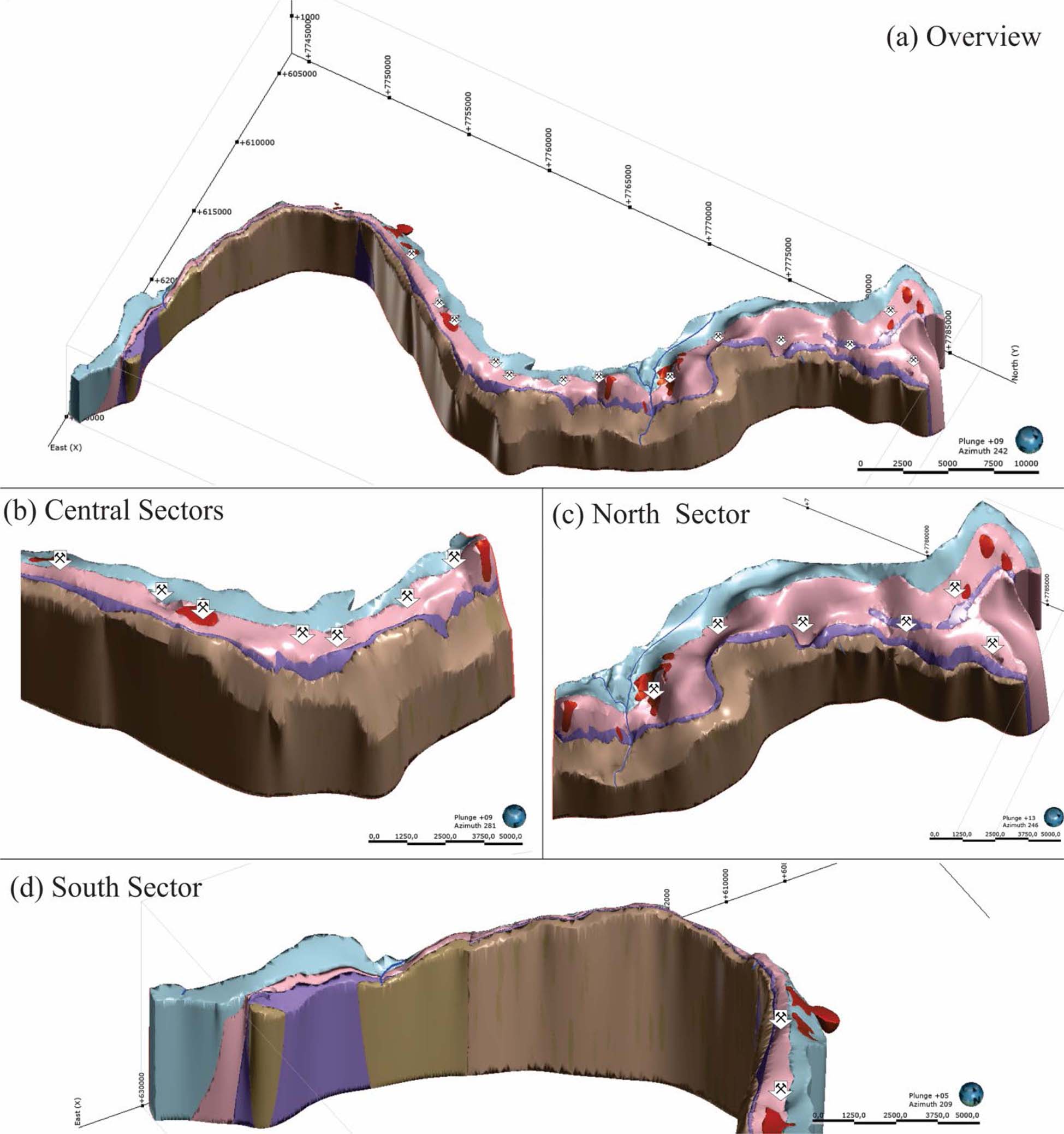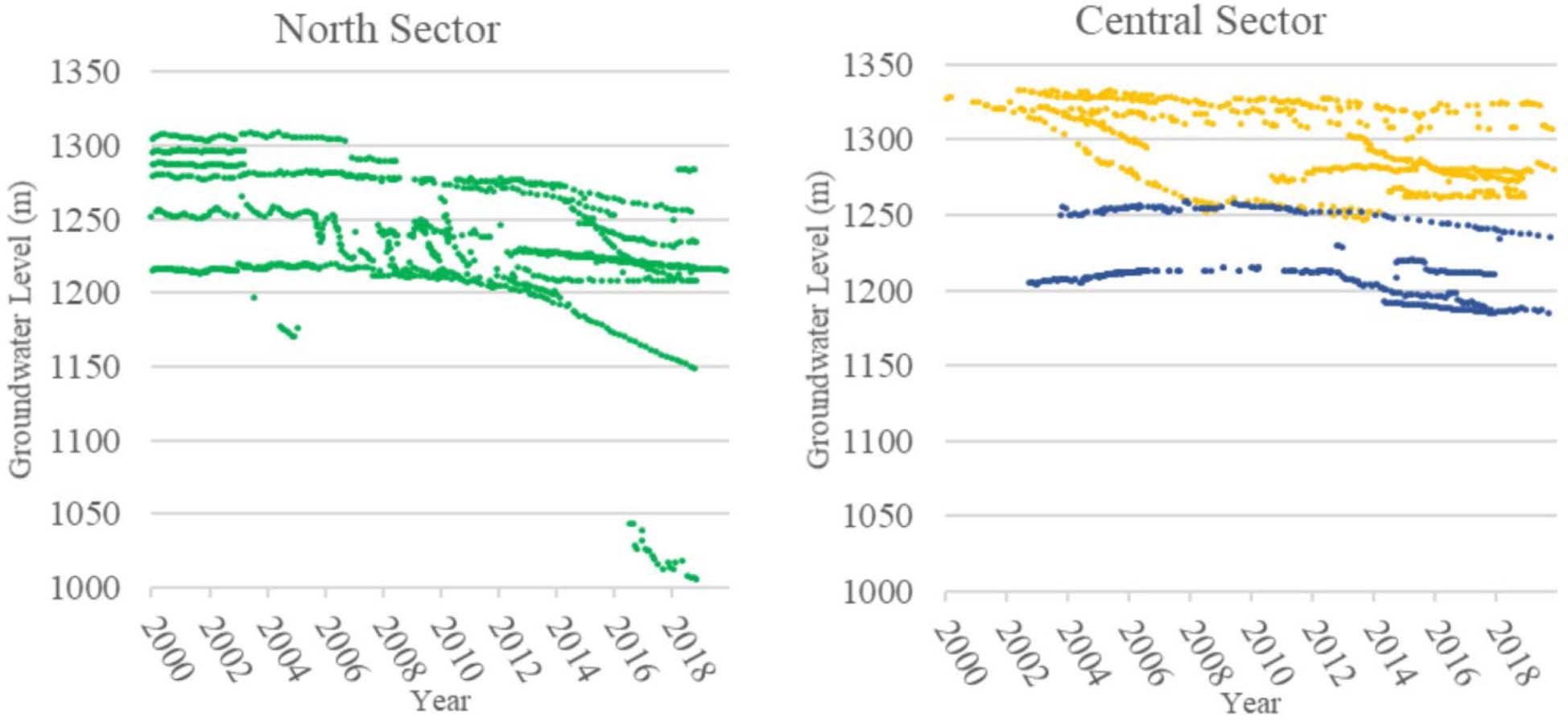|
Recent Coverage
|
Superficial alluvial and colluvial deposits |
|
Laterite Covers
|
Alteration product of itabirite that occurs mainly over rocks of the Cauê Formation, covering tops of hills and slopes, and may extend over non-ferruginous formations |
|
Minas Supergroup
|
Sabará Group
|
It outcrops in a restricted area in the center of the Moeda Syncline and contains phyllite, metavolcanic schist, metagraywacke, and quartzite (Silva et al. 2005Silva S.L., Monteiro E.A., Baltazar O.F. 2005. Geologia. In: CPRM/SEMAD/CEMIG. Projeto APA Sul RMBH - estudos do meio físico: área de proteção ambiental da região metropolitana de Belo Horizonte. Belo Horizonte: CPRM/SEMAD, 73 p.) |
|
Piracicaba Group
|
Quartzite, phyllite, and subordinate dolomite lenses (Silva et al. 2005Silva S.L., Monteiro E.A., Baltazar O.F. 2005. Geologia. In: CPRM/SEMAD/CEMIG. Projeto APA Sul RMBH - estudos do meio físico: área de proteção ambiental da região metropolitana de Belo Horizonte. Belo Horizonte: CPRM/SEMAD, 73 p.) |
|
Itabira Group
|
Gandarela Formation
|
Dolomite, marble, phyllite, and dolomitic itabirite (Silva et al. 2005Silva S.L., Monteiro E.A., Baltazar O.F. 2005. Geologia. In: CPRM/SEMAD/CEMIG. Projeto APA Sul RMBH - estudos do meio físico: área de proteção ambiental da região metropolitana de Belo Horizonte. Belo Horizonte: CPRM/SEMAD, 73 p.), with average thickness on the order of 200 m (Pimenta et al. 2009Pimenta F., Lopes-Silva L., Pirotte N., Rosière C.A. 2009. Stratigraphic analysis of a carbonate sequence related to the BIFs of the Iron Quadrangle, southeastern Brazil. In: Biennial Meeting of the Society of Geology Applied to Mineral Deposits, 10., Townsville. SGA.) |
|
Cauê Formation
|
Itabirite with lenses of dolomite, compact and friable hematite, phyllite, and marble. It has an average thickness between 200 and 300 m (Rosière and Chemale Jr 2000Rosière C.A., Chemale Jr. F. 2000. Itabiritos e minérios de ferro de alto teor do Quadrilátero Ferrífero: uma visão geral e discussão. Geonomos, 8(2):27-43. https://doi.org/10.18285/geonomos.v8i2.155
https://doi.org/https://doi.org/10.18285...
), and can reach up to 1,500 m in some portions where successive folding has occurred (Rossi 2014Rossi D.Q. 2014. Estratigrafia e arcabouço estrutural da região de Fábrica Nova, Quadrilátero Ferrífero, Minas Gerais. Dissertation, Escola de Minas da Universidade Federal de Ouro Preto, Ouro Preto.) |
|
Caraça Group
|
Batatal Formation
|
Sericitic, carbonaceous, and ferruginous phyllites. It is at most 250 m thick, but usually does not reach 30 m (Maxwell 1972Maxwell C.H. 1972. Geology and ore deposits of the Alegria district, Brazil. Washington, D.C.: USGS/DNPM, 72 p., Beato et al. 2006Beato D.A.C., Monsores A.L.M., Bertachini A.C. 2006. Potencial aquífero nos metassedimentos do Quadrilátero Ferrífero - região da APA SUL RMBH - MG. In: Congresso Brasileiro de Águas Subterrâneas, 14., Curitiba. Proceedings… Curitiba, p. 1-20.) |
|
Moeda Formation
|
Quartzite, phyllite, and conglomerate. It has an average thickness of 200 m, and can locally reach up to 1,200 m (Beato et al. 2006Beato D.A.C., Monsores A.L.M., Bertachini A.C. 2006. Potencial aquífero nos metassedimentos do Quadrilátero Ferrífero - região da APA SUL RMBH - MG. In: Congresso Brasileiro de Águas Subterrâneas, 14., Curitiba. Proceedings… Curitiba, p. 1-20.) |
|
Das Velhas River Supergroup
|
Nova Lima Group
|
Metasedimentary schist, metavolcanic schist, and phyllite (Beato et al. 2006Beato D.A.C., Monsores A.L.M., Bertachini A.C. 2006. Potencial aquífero nos metassedimentos do Quadrilátero Ferrífero - região da APA SUL RMBH - MG. In: Congresso Brasileiro de Águas Subterrâneas, 14., Curitiba. Proceedings… Curitiba, p. 1-20.) |
|
Archean Gneissic-migmatitic Complexes
|
Granite-Gneissic terrain intruded by granitoid bodies, basic, and metabasic rocks (Alkmim and Marshak 1998Alkmim F.F., Marshak S. 1998. Transamazonian Orogeny in the Southern São Francisco Craton Region, Minas Gerais, Brazil: evidence for Paleoproterozoic collision and collapse in the Quadrilátero Ferrífero. Precambrian Research, 90(1-2):29-58. https://doi.org/10.1016/S0301-9268(98)00032-1
https://doi.org/https://doi.org/10.1016/...
) |

 Thumbnail
Thumbnail
 Thumbnail
Thumbnail
 Thumbnail
Thumbnail
 Thumbnail
Thumbnail
 Thumbnail
Thumbnail
 Thumbnail
Thumbnail
 Thumbnail
Thumbnail
 Thumbnail
Thumbnail
 Thumbnail
Thumbnail
 Thumbnail
Thumbnail
 Thumbnail
Thumbnail


 Source: based on
Source: based on 





 Source: generated using Leapfrog Geo, a Bentley Software (
Source: generated using Leapfrog Geo, a Bentley Software (